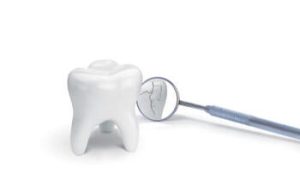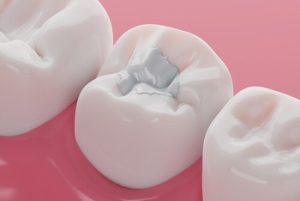Getting a filling should bring relief, but for some, it comes with an unexpected sensation—heightened sensitivity. Have you ever taken a sip of your favourite drink only to feel a sudden twinge in your tooth? This discomfort can make daily activities like eating and drinking a little less enjoyable. While the sensation may be temporary, understanding why it happens can help you manage it better. Some people barely notice any change, while others find even mild temperature shifts unsettling. Exploring the effects of tooth sensitivity after a filling can give you a clearer idea of what to expect and when it’s time to seek help.
Why Do You Feel Tooth Sensitivity After a Filling?
A newly filled tooth may sometimes feel different, especially when exposed to hot and cold foods. While this reaction can be unsettling, it is often a normal part of the adjustment process. Understanding why this happens can help in managing any discomfort effectively.
 How Dental Fillings Can Affect Sensitivity
How Dental Fillings Can Affect Sensitivity
The placement of a filling involves removing decayed portions of a tooth and sealing the area with restorative material. This process may disturb the nerve endings inside, leading to temporary tooth sensitivity. The extent of discomfort varies depending on the depth of the cavity and how close it is to the nerve. Some people notice mild sensitivity when biting down, while others feel a sharper reaction when eating or drinking. These sensations usually improve over time as the tooth adapts to the new restoration.
Understanding Referred Pain in Teeth
Sometimes, discomfort is felt in the teeth surrounding the filled tooth rather than in the one that was treated. This is due to a phenomenon called referred pain, where signals from one area in the mouth are perceived as coming from another. This sensation can make it seem like multiple teeth are affected, even when only one was treated. While it can be confusing, referred pain typically fades after a few days as the nerves settle.
Sensitivity After a Filling: What Influences It?
Several factors can determine how a tooth reacts after treatment. A deeper filling may cause more noticeable sensitivity compared to a shallow one. The type of material used, as well as how well it bonds to the tooth structure, can also play a role. A filling that slightly alters the bite alignment may create uneven pressure, leading to sharp pain when chewing. If discomfort continues for an extended period, further adjustments may be needed to improve comfort.
How an Affected Tooth Responds to Temperature Changes
A restored tooth can sometimes become more reactive to temperature shifts, particularly if the dental procedure involves a large portion of the enamel. Exposure to hot or cold foods may trigger sudden discomfort due to changes in nerve sensitivity. While this reaction is common, it should gradually improve over time. If it persists, using a desensitising toothpaste may help reduce sensitivity.
When a Cracked or Broken Tooth Contributes to Sensitivity
If a tooth was already weakened before treatment, it may take longer to recover after the procedure. A cracked or broken tooth can make the nerves inside more sensitive, amplifying discomfort after a filling is placed. In such cases, additional evaluation is necessary to determine whether further treatment is required. Strengthening the tooth with a different type of restoration may be recommended if sensitivity does not improve.
When Tooth Pain May Indicate a More Serious Issue
Mild discomfort is expected after a filling, but severe or prolonged pain could indicate an underlying issue. If the pain worsens over time instead of improving, it may be a sign that the nerve inside the tooth is inflamed.
Could an Allergic Reaction Be the Cause?
Some individuals may have an allergic response to the materials in their fillings, though this is uncommon. If sensitivity is accompanied by irritation, swelling, or other unusual symptoms, discussing alternative materials with a dentist may be beneficial. Identifying the cause of the reaction ensures that the most suitable treatment option is chosen.
How Do You Handle Tooth Sensitivity After a Filling?
 Making Dietary Changes to Reduce Sensitivity
Making Dietary Changes to Reduce Sensitivity
Certain food choices can trigger discomfort in the days following a filling. Extreme temperatures, such as hot or cold foods, may heighten sensitivity and cause brief, sharp sensations. Choosing lukewarm meals and avoiding overly hard or sticky textures can help reduce irritation. Soft foods that require minimal chewing allow the tooth to recover without unnecessary strain. Small dietary adjustments can make a noticeable difference in comfort while the tooth settles.
Using Oral Care Products for Relief
Switching to toothpaste made for sensitive teeth can help ease post-filling discomfort. These products contain compounds that block nerve pathways, reducing the intensity of sensitivity over time. A soft toothbrush is also recommended to prevent unnecessary pressure on the affected area. Gentle brushing techniques, combined with fluoride-based toothpaste, contribute to a smoother recovery and help maintain overall oral health.
Monitoring Changes in Sensitivity Over Time
The adjustment period after a filling varies from person to person. In most cases, sensitivity lessens within two to four weeks as the tooth adapts to the new restoration. If discomfort persists beyond this timeframe or worsens, it may indicate a problem that requires professional evaluation. A filling that alters the bite or places uneven pressure on certain areas may need slight modifications to improve comfort.
When to Seek Professional Advice
Mild discomfort is expected after a filling, but persistent or severe sensitivity should not be ignored. A filling that does not bond properly to the tooth may cause continued irritation. If sensitivity is accompanied by pain, swelling, or prolonged discomfort, a follow-up visit to the dentist is recommended. Early assessment ensures that any necessary adjustments are made before complications develop.
Keeping Teeth Comfortable After a Filling
Managing sensitivity after a filling requires patience and proper care. Making small changes, such as adjusting eating habits and using gentle oral care techniques, can significantly reduce discomfort. In most cases, symptoms improve with time, allowing the tooth to function as expected. Seeking professional guidance when needed ensures that any concerns are addressed promptly, leading to a more comfortable and lasting result.
Professional Solutions for Ongoing Sensitivity
Mild discomfort after a filling is common, but ongoing sensitivity shouldn’t be ignored. While adjustments in eating habits and oral care can ease symptoms, persistent discomfort may indicate an underlying issue. If you experience tooth sensitivity that doesn’t improve or worsen, it’s important to have it checked to rule out concerns like tooth decay or improper filling placement. Changes in bite alignment or the filling material itself could also contribute to prolonged sensitivity. Addressing the issue early can prevent further complications and ensure the tooth remains strong and functional.
Our team is here to ensure your fillings support both comfort and function. Call us today at (02) 9159 6237 to schedule an appointment and find relief from lingering sensitivity.
References
https://www.webmd.com/oral-health/problems-dental-fillings
https://www.colgate.com/en-in/oral-health/fillings/tooth-pain-after-a-filling-is-it-normal


 How Dental Fillings Can Affect Sensitivity
How Dental Fillings Can Affect Sensitivity Making Dietary Changes to Reduce Sensitivity
Making Dietary Changes to Reduce Sensitivity